Near Manhattan’s Murray Hill lies a go-to spot for Hindi movie rental shops, paan vendors and grocery stores catering to the South Asian community. There, the aroma of Indian spices waft through doors and on to the streets of Lexington Avenue, near East 28th Street, a neighborhood informally termed “Curry Hill.”
By 2000, Indians became the third-largest population of foreign-born residents in America, many of whom settled near Murray Hill, a district which lies between East 34th Street and 42nd Street, through Madison Avenue and East River. The area is named after the mercantile Murray family who, in the mid-1700s, migrated to New York from North Carolina and briefly, Pennsylvania. Since then, the area has experienced many cultural transitions.
Walking through the neighborhood today, you would find it hard to believe that a few decades ago, Curry Hill went by a different nickname: Little Armenia.
Armen Marsoobian, now a philosophy professor at Southern Connecticut State University, recalls there existing at least three Armenian restaurants in the area, one he remembers was Balkan. “We would pass them as we walked from the subway station on Park Avenue and East 28th Street to the [Armenian St. Illuminator’s Apostolic Cathedral] church,” he says.
While Balkan and the other restaurants Marsoobian remembers no longer exist, at one time, they were quite popular.
* * *
Armenians began to arrive in the state by the mid-19th century. Many of those who came were educated, paving careers in business and medicine. Shortly after the 1894-1896 massacres of Armenians by Sultan Abdul Hamid II in Ottoman Turkey, Armenian immigration to the United States increased.
From the Hamidian massacres to the years after the Armenian Genocide, there was a stream of Armenian immigration to the United States. As with many immigrants during those years, the first glimpse of their refuge was Ellis Island. Exact numbers from the influx are difficult to determine.
Barry Moreno from the Ellis Island Immigration Museum says, “Prior to 1899, Armenians would only have been recorded by their nationality. Thus most of them would have been recorded as Turkish.”
According to the U.S. Bureau of Immigration figures, from 1899 to 1931, 81,729 Armenian immigrants entered the U.S.; seventy percent of whom entered through Ellis Island at the Port of New York.
Because many families became separated during the death marches, those who found their way to America often “consisted of single individuals, orphans, and chance groupings of individuals who banded together for security and mutual support,” according to an article titled Armenians in America written by Dennis Papazian, professor emeritus from the University of Michigan at Dearborn.
In many ways, America became a meeting place for those who had lost track of one another.
According to Papazian, “Armenian newspapers in America were filled with advertisements placed by people seeking knowledge of the whereabouts, or the fate, of family members and friends.”
The frayed community settled in a part of lower Manhattan that came to be known as Little Armenia.
“In the beginning of the 20th century, there were rug merchants on Madison Avenue to Fifth Avenue, from 34th Street to 23rd Street, and they dealt with wealthy customers,” explains Paul Sagsoorian in his piece, “Growing Up as an Armenian-American in New York City Between the Two World Wars.”
“Little Armenia” was easy to get to from all directions, and affordable – the fare was only five cents at the time. Sagsoorian notes about that period, “There were four elevated trains, two subway lines, one on the east side, and the other on the west side. Trolleys ran north and south on the main avenues, while buses and some trolleys ran east to west on the crosstown streets.”
* * *
Arpine Dod, 77, grew up in the Bronx and then Queens, but she frequented Little Armenia regularly as a child. Being newcomers to the state, there was a sense of otherness that many felt. The community became an extended family.
One of Dod’s 86-year old Armenian friends grew up on East 25th Street. “She would tell me mothers never had to worry,” says Dod. “They’d let their children play unattended until nightfall. Everybody knew everybody. It was a very close community.”
Dod’s father, Michael Kahayan, and his family emigrated to the US from Iran in 1921. Kahayan was an intellectual and he was business-savvy. He also had an artistic touch and decided to set up a shop on East 27th Street and 3rd Avenue called K Michael Signs. He later also took over his brother’s business which he called MKahayan Imported Food Store, once located on 211 East 28th Street.
Kahayan imported spices from various countries, including Egypt, Syria and India. Today easily found in one of New York’s myriad of ethnic food stores, he sold items that were then rare like turmeric, tamarind, and Za’atar.
“All the spices were kept in glass jars and sold by the ounce or pound,” his daughter recalls. The store became popular. “He was very personable, spoke five languages and was able to communicate with just about anyone.” Dod’s mother, Zabel Donigian Kahayan, would make Armenian coffee for clients, further adding to the store’s charm.
While Kahayan’s store supplied gourmet-style foods, like beluga caviar, grocery stores like Anooshian and, later, Kalustyan, offered Armenian items like stuffed grape leaves and more.
* * *
Among the few remnants of the once thriving Armenian presence in Murray Hill are its churches; there are three located within the same vicinity.
The oldest Armenian church in New York, Saint Illuminator’s Apostolic Cathedral was founded in 1915 and many of its original parishioners were genocide survivors.
Marsoobian’s father began attending the church when he first emigrated from Syria shortly after the Genocide. Growing up, it soon became Marsoobian’s tradition as well. “We went there from when I was a little child until I went away to college. I still on rare occasions visit it for hokehankists (memorial services) for members of the family,” says Marsoobian.
The Armenian Evangelical Church on 152 East 34th Street completed its construction in 1923. Here too many Armenians feel a special connection to the church because of traditions their relatives started. “We have many congregation members who visit from New Jersey,” says Mesrop Borekjian, 23, who works at the church. “This church existed before the New Jersey church was established.”
A third church in Murray Hill, the St. Vartan Armenian Cathedral, on 2nd Avenue and East 34th Street, was developed in 1968. By this time, however, many Armenians had already moved out of the neighborhood for greater comfort. Many moved to the suburbs of the Tristate area (New York, New Jersey, and Connecticut).
The churches would offer youth programs which many children from the community took part in. Avedis Alashaian, 80, lived in Murray Hill until the age of thirty. His father owned a dry-cleaning store on East 28th Street and Lexington Avenue. Much of what he learned about his roots was through the church programs; he attended Armenian school three days a week.
Alashaian gladly learned Armenian folk songs and dances. “Our ancestors brought their culture with them from Armenia, I was able to learn it and now my three children can participate in it as well,” he says.
One of his favorite stores was on 3rd Avenue, between East 26th and East 27th street. “There was a record shop there where they used to sell Armenian albums. And in the back of the store there was a bookstore that I also really liked. I remember it was owned by a Mr. Tashjian.”
Renowned oud player Ara Dinkjian, too, remembers this store well. “Tashjian’s grocery and music store was my main source for 78rpm records 50 years ago.” He adds, “Most Armenians had a collection of these Armenian or Turkish records, which were recorded both here and abroad.” Dinkjian now has over 5,000 records in his collection, which have become an invaluable source of information for him.
Alashaian spent his summers going swimming with his friends, or attending picnics and barbecues. Many social events also revolved around music as their church would hold concerts and dances. It was through these gatherings that Alashaian became good friends with the renowned musician George Mgrdichian.
Originally from Philadelphia, Mgrdichian also lived in New York for some time. “He was well liked by everyone,” recalls Alashaian.
Mgrdichian used to play the clarinet in their Armenian band, Gomidas, but when their oud player was drafted into military service, Mgrdichian had to step in. He taught himself how to play the oud. “I remember he’d be in his basement practicing the new instrument all day and night,” says Alashaian.
In 1933, after Archbishop Leon Tourian was assassinated by a group of Armenians, the community was on the verge of a serious rift. Alashaian believes it was music that gradually helped bring the community back together again.
Going from neophyte to self-taught oud virtuoso, Mgrdichian gained a following that came to watch him play at New York’s storied Webster Hall. “The events were getting larger and larger,” says Alashaian. “And it was bringing the entire community together.” Mgrdichian began releasing albums and introduced the oud to American audiences.
The New York Times, in its obituary for Mgrdichian, wrote, “At one concert with players from the Metropolitan Opera and New York City Opera orchestras, Mr. Mgrdichian played his own arrangement of a Handel oboe concerto on the oud, causing jaws to drop all around him […].”
Another famous musician on the New York scene, Onnik Dinkjian, got his start in music through church gatherings. “I absolutely fell in love with the music,” he said. “This is what brought me into the Armenian Church, not necessarily as a religious person but as a lover of the Armenian music,” he told the Armenian Weekly.
His son Ara Dinkjian’s passion for music developed in a similar environment, at New York’s St. Illuminator’s Cathedral.
“It is where we had weekly rehearsals for the Kousan Chorus,” the younger Dinkjian, now in his 50s, says of the chorus which both his parents belonged to. Because Dinkjian grew up attending all of his parents’ rehearsals, “I unintentionally learned the vast repertoire of Armenian classical, folk, and popular music,” he says. It is this music which continues to be the foundation of his musical personality today.
Armenian music was also bringing differing communities together. The album, “Armenians on 8th Avenue” for instance, contains traditional Armenian, Turkish and Greek songs sung by Armenian-Americans in the mid-1900s, which were recorded in night clubs and Greek-owned cafes on 8th and 9th Avenue.
* * *
Music was just one of the flavors Armenians brought back to their new American homeland. At the time, foreign food was also an unfamiliar concept to Americans, but it gradually grew in popularity. Dod explains, “After the second world war, a lot of soldiers returned home from serving in foreign locations. They would come by the store to taste foods that were different to them and they liked it.”
Craig Claiborne, the influential New York Times food journalist, would frequent the family store, as did writer William Saroyan and actor Kirk Douglas. Dod recalls, “Kirk Douglas would come to the store and ask my mother how to make certain recipes. She had no idea who he was!”
* * *
When Dod’s father became ill, he sold his store to a shopkeeper. It was later converted into a Japanese restaurant and then, an American bistro. Twenty-five years later, Dod and her husband paid a visit to the property. “It was nice to go back but the attachment I once felt was gone,” she admits.
The Armenian shoe repair shop next door to them had become an Italian restaurant. And her favorite Greek bakery across the street from their shop was no longer there either.
New York Times columnist, Joseph Berger writes, “While Armenians have contributed mightily to the culture of the city — the painter Arshile Gorky, the stage designer Rouben Ter-Artounian, the producer Ruben Mamoulian and the composer Alan Hovhaness — there are fewer than 100,000 Armenians left in the city.”
Alashaian and his family now live in New Jersey. There is a church just ten minutes away from him, yet he still makes the trek to Murray Hill to visit his childhood church on East 27th Street. “My heart belongs in Manhattan,” he says.
He is sad to realize that his old neighborhood is no longer the same, but also feels a sense of pride. “Most of the new Armenians who came here were blue-collar people. Many of them did not know the language. They struggled, they had to work hard and raise their families.”
The philosophy for many families was, “if you don’t have the money, you can look at the items but then, keep on walking.” Alashaian says this motto worked. “Most of the community prospered and as things got a little better in their lives, they turned around and moved into better neighborhoods.”
Dod has embraced the changes that “Little Armenia” has experienced. She still visits Kalustyan’s specialty food store, one of the few formerly Armenian-owned businesses remaining that bears its original name, to buy her spices. Though the business has changed hands, there is a deli upstairs where a Kalustyan family member remains busy at work.
In terms of the South Asian restaurants in her neighborhood, Dod is thankful for the variety. “In fact, I had lunch at my favorite vegetarian restaurant just the other day – Curry in a Hurry on Lexington!”

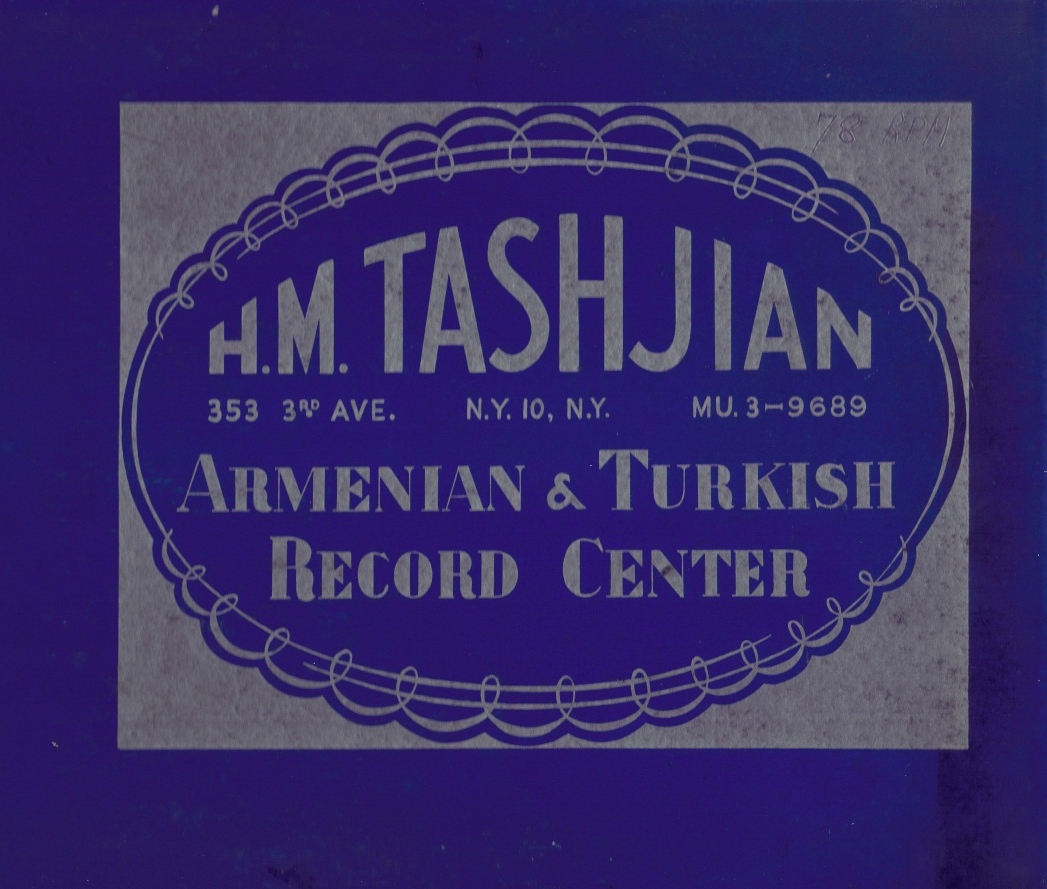
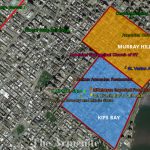
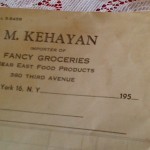
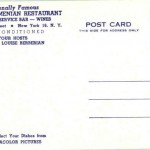
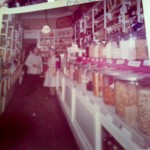
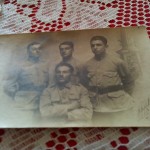
[…] A History of Little Armenia, New York […]
I love your blog
I have read this article and enjoyed it
Dear Armenians I am coming to spend summer in New York. I am in summer holdiday period. Can you host me somwhere please although for a few days? Please let me know as soon as possible. I don’t have anyone who can meet me at airoport Kennedy.
Waiting for your soonest feedback
Lia Davtyan
Hi, It was so nice reading your article. My Mom grew up on 28th st during the time period you remember so well. Her name was Gadad (maybe spelled wrong) Katherine in english. and her last name was Kouyoumdjian. She had so many fond memories of the great 28th st and all her friends. Was looking for great Armenian recipes that my Grandmother would sometimes cook. Sure wish I had the opportunity to learn more about those wonderful traditions.
[…] Patel, B. (2014, March 17). Little Armenia, New York. The Armenite. Retrieved from: http://thearmenite.com/2014/03/little-armenia-new-york-bhavna-patel/ […]
[…] Patel, B. (2014, March 17). Little Armenia, New York. The Armenite. Retrieved from: http://thearmenite.com/2014/03/little-armenia-new-york-bhavna-patel/ […]
[…] Patel, B. (2014, March 17). Little Armenia, New York. The Armenite. Retrieved from: http://thearmenite.com/2014/03/little-armenia-new-york-bhavna-patel/ […]
I see you don’t monetize your website, don’t waste your traffic, you can earn additional bucks every month
because you’ve got hi quality content. If you want to know how to make
extra bucks, search for: Mrdalekjd methods for $$$
My mother, born in 1921 to Armenian refugees, grew up in little Armenia where my grandfather had a restaurant. They later moved “up” to the Bronx, but grandpa continued to be a chef in the old neighborhood, where my mom has told me William Saroyan dined regularly as a poor young writer – for free, because people helped and supported each other back then. After closing his restaurant because he could not obtain enough meat during WWII he was the head chef at the Balkan Armenian restaurant until shortly before his death in 1958. My mom was a great cook and still made specialties like media dolma, boereg, and sarama, until very recently. While at 96 she can no longer cook, I continue to honor this half of my heritage by preparing these and other special dishes a few times a year – and my 22 year old Armenian-Jewish-Italian son has also learned how to prepare this food. Food helps connect us to our stories and reminds us of who we are.
Dear All,
I am from Cyprus and I need your help to find a Armenian Cooking Book by Alice Bezjian. I ordered by Amazon last year and unfortunately I did not received anything. They return the total costs. So today I found some Cypriot Armenian and they asked me to find somebody from USA Armenian Club to Help me.
Looking forward to your reply and thanks in advance
[…] on Pharos, an establishment of East Manhattan’s Murray Hill neighborhood, then often known as “Little Armenia.” One important observe on right here is “Ouskeh Gukas (The place Do You Come From?)” by Nishan […]
[…] on Pharos, an institution of East Manhattan’s Murray Hill neighborhood, then known as “Little Armenia.” One significant track on here is “Ouskeh Gukas (Where Do You Come From?)” by Nishan Keljikian […]
[…] on Pharos, an institution of East Manhattan’s Murray Hill neighborhood, then known as “Little Armenia.” One significant track on here is “Ouskeh Gukas (Where Do You Come From?)” by Nishan Keljikian […]